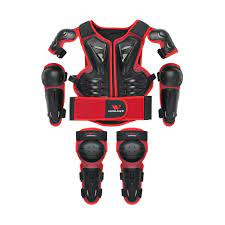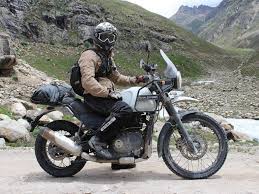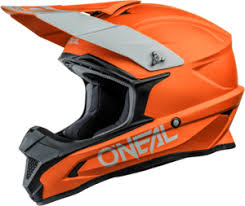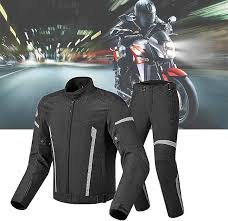Stay Safe and Stylish: The Importance of Full Motorcycle Gear

The Importance of Full Motorcycle Gear
Riding a motorcycle can be an exhilarating experience, but it also comes with risks. One of the most important aspects of motorcycle safety is wearing the proper gear. Full motorcycle gear is essential for protecting riders in case of accidents and ensuring a safe and enjoyable ride.
Helmet
The helmet is perhaps the most crucial piece of gear for any motorcyclist. It provides protection for the head in case of a crash and can prevent serious head injuries. When choosing a helmet, it’s important to ensure that it fits properly and meets safety standards.
Jacket
A sturdy motorcycle jacket not only looks cool but also serves an important purpose. It can protect riders from abrasions in case of a fall and provide an extra layer of insulation against wind and cold weather. Look for jackets made from durable materials like leather or textile with built-in armour for added protection.
Gloves
Motorcycle gloves are essential for protecting your hands in case of a crash or road debris. They provide grip on the handlebars and help prevent blisters on long rides. Look for gloves with reinforced palms and knuckle protection for added safety.
Trousers
Proper riding trousers are designed to protect your lower body from abrasions, impacts, and weather conditions. Look for trousers made from abrasion-resistant materials with built-in armour at critical impact areas like knees and hips.
Boots
A good pair of motorcycle boots can provide ankle support, traction, and protection in case of a crash. Look for boots with sturdy soles, ankle protection, and reinforcement at the toe and heel areas.
Wearing full motorcycle gear may seem like an inconvenience to some riders, but the benefits far outweigh the drawbacks. Investing in quality gear can save lives, prevent serious injuries, and make every ride safer and more enjoyable.
Seven Key Benefits of Wearing Full Motorcycle Gear: From Safety to Comfort
- Enhanced safety in case of accidents
- Protection from abrasions and road rash
- Prevention of serious head injuries with a helmet
- Improved visibility to other road users
- Increased comfort on long rides
- Weather protection against wind, rain, and cold
- Boosted confidence and peace of mind while riding
The Three Drawbacks of Full Motorcycle Gear: Expense, Cumbersomeness, and Overheating
Enhanced safety in case of accidents
Wearing full motorcycle gear significantly enhances safety in case of accidents. The protective gear, including a helmet, jacket, gloves, trousers, and boots, acts as a crucial barrier between the rider and potential injuries during a crash. These gear items are designed to absorb impact, reduce abrasions, and protect vulnerable areas of the body. By investing in and wearing full motorcycle gear, riders greatly increase their chances of minimizing injuries and staying safe on the road.
Protection from abrasions and road rash
One significant advantage of wearing full motorcycle gear is the protection it offers against abrasions and road rash. In the event of a fall or accident, the durable materials and reinforced components of motorcycle gear act as a barrier between the rider’s skin and the rough surfaces of the road. This helps prevent painful and potentially severe injuries that can result from friction with the ground, allowing riders to stay safe and minimising the risk of long-term skin damage. By investing in proper gear, motorcyclists can enjoy added peace of mind knowing that they are well-equipped to handle unexpected situations on the road.
Prevention of serious head injuries with a helmet
Wearing a helmet as part of full motorcycle gear is essential for preventing serious head injuries in the event of a crash or accident. Helmets provide a crucial layer of protection for riders by absorbing impact forces and reducing the risk of traumatic brain injuries. By wearing a helmet that meets safety standards and fits properly, motorcyclists significantly decrease the likelihood of sustaining life-threatening head injuries, making it a vital component of safe riding practices.
Improved visibility to other road users
Wearing full motorcycle gear not only provides essential protection for riders but also significantly improves visibility to other road users on the road. Brightly colored or reflective gear, such as high-visibility vests or jackets, can make motorcyclists more noticeable in various lighting conditions, especially during dawn, dusk, or nighttime rides. Enhanced visibility reduces the risk of accidents caused by other drivers failing to see motorcyclists in their vicinity, ultimately contributing to a safer riding experience for everyone on the road.
Increased comfort on long rides
One significant advantage of wearing full motorcycle gear is the increased comfort it provides on long rides. Properly fitted gear, such as a well-padded jacket, ergonomic gloves, supportive trousers, and sturdy boots, can help reduce fatigue and discomfort during extended periods of riding. The right gear not only offers protection but also enhances the overall riding experience by ensuring that riders stay comfortable and focused throughout their journey.
Weather protection against wind, rain, and cold
Full motorcycle gear offers essential weather protection against wind, rain, and cold, ensuring riders can stay comfortable and focused on the road regardless of the conditions. A well-designed motorcycle jacket and trousers with proper insulation and waterproofing can shield riders from harsh winds and keep them dry in rainy weather. Additionally, wearing gear that provides thermal insulation helps to combat the chill of colder temperatures, allowing riders to maintain their concentration and control while enjoying a safer and more enjoyable ride.
Boosted confidence and peace of mind while riding
Wearing full motorcycle gear not only provides physical protection but also boosts confidence and peace of mind while riding. Knowing that you are properly equipped with a helmet, jacket, gloves, trousers, and boots gives riders a sense of security and assurance. This increased confidence allows riders to focus on the road ahead without worrying about potential risks or accidents. By wearing full motorcycle gear, riders can enjoy their journey with a clear mind, knowing that they are well-prepared for whatever may come their way.
Cost
One notable drawback of full motorcycle gear is the cost involved. High-quality motorcycle gear, including helmets, jackets, gloves, trousers, and boots, can come with a hefty price tag, making it a significant financial investment for riders. While the cost may be a deterrent for some individuals, it’s important to consider that quality gear offers superior protection and durability, ultimately contributing to rider safety on the road. Riders may need to weigh the upfront expense against the long-term benefits of investing in reliable gear that can potentially save lives and prevent serious injuries in case of accidents.
Bulkiness
One notable drawback of full motorcycle gear is its bulkiness, which can be cumbersome, especially when off the bike. The protective elements in gear such as helmets, jackets, trousers, gloves, and boots can add significant weight and restrict movement to some extent. This bulkiness may make it challenging to move around comfortably when not riding, leading some riders to feel restricted or encumbered by their gear. However, despite this inconvenience, the safety benefits of full motorcycle gear in protecting riders during accidents outweigh the issue of bulkiness for many riders who prioritize safety on the road.
Heat
One significant drawback of wearing full motorcycle gear, especially in hot weather, is the issue of heat. The layers of protective gear can trap heat and restrict airflow, leading to discomfort and overheating for riders during rides. The added insulation and coverage that provide protection in cooler conditions can become a source of discomfort when temperatures rise, making it challenging to stay cool and comfortable on long rides. Riders must strike a balance between safety and comfort when choosing gear for hot weather conditions to ensure a safe and enjoyable riding experience.









